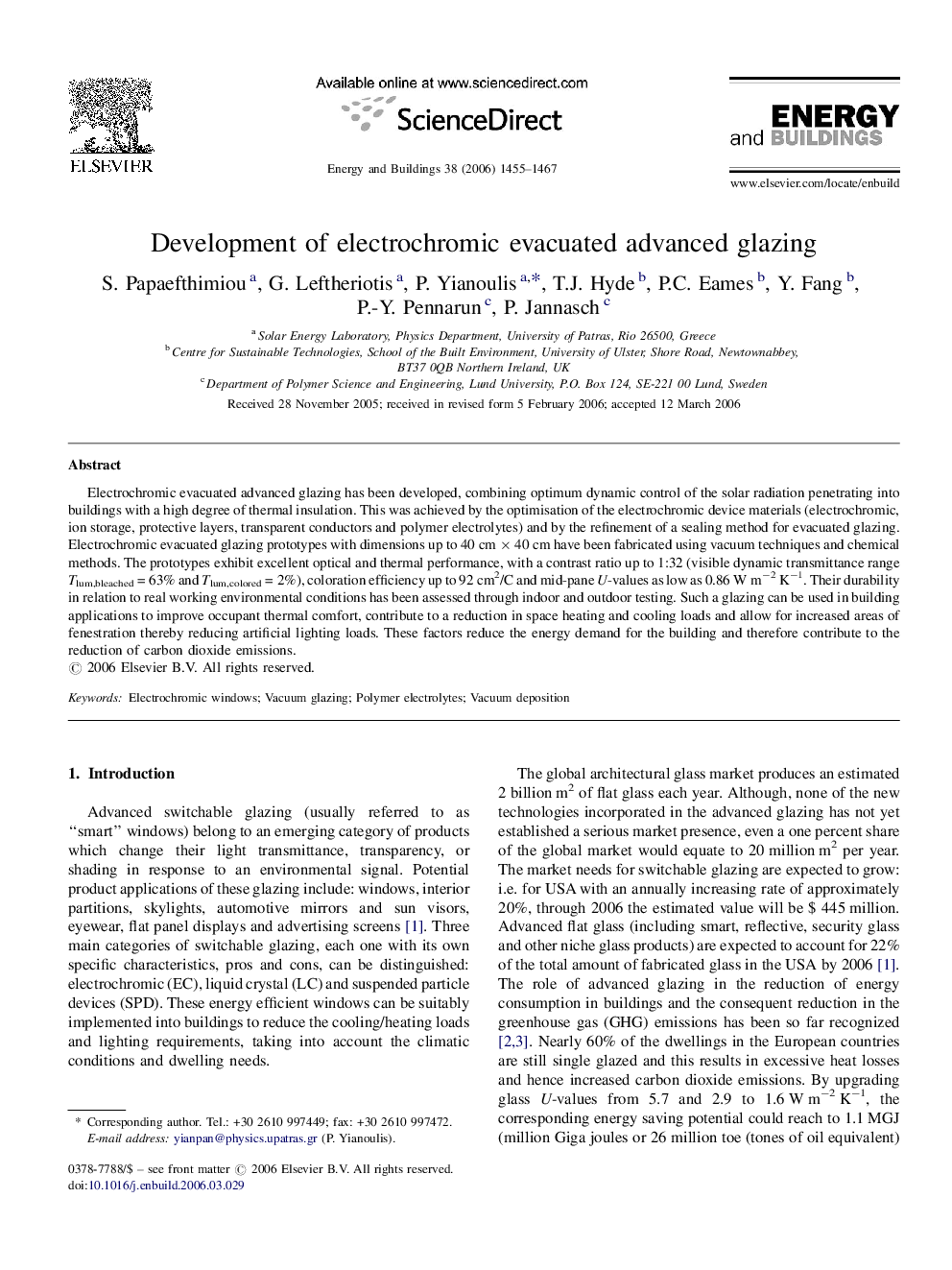| Article ID | Journal | Published Year | Pages | File Type |
|---|---|---|---|---|
| 265321 | Energy and Buildings | 2006 | 13 Pages |
Electrochromic evacuated advanced glazing has been developed, combining optimum dynamic control of the solar radiation penetrating into buildings with a high degree of thermal insulation. This was achieved by the optimisation of the electrochromic device materials (electrochromic, ion storage, protective layers, transparent conductors and polymer electrolytes) and by the refinement of a sealing method for evacuated glazing. Electrochromic evacuated glazing prototypes with dimensions up to 40 cm × 40 cm have been fabricated using vacuum techniques and chemical methods. The prototypes exhibit excellent optical and thermal performance, with a contrast ratio up to 1:32 (visible dynamic transmittance range Tlum,bleached = 63% and Tlum,colored = 2%), coloration efficiency up to 92 cm2/C and mid-pane U-values as low as 0.86 W m−2 K−1. Their durability in relation to real working environmental conditions has been assessed through indoor and outdoor testing. Such a glazing can be used in building applications to improve occupant thermal comfort, contribute to a reduction in space heating and cooling loads and allow for increased areas of fenestration thereby reducing artificial lighting loads. These factors reduce the energy demand for the building and therefore contribute to the reduction of carbon dioxide emissions.
